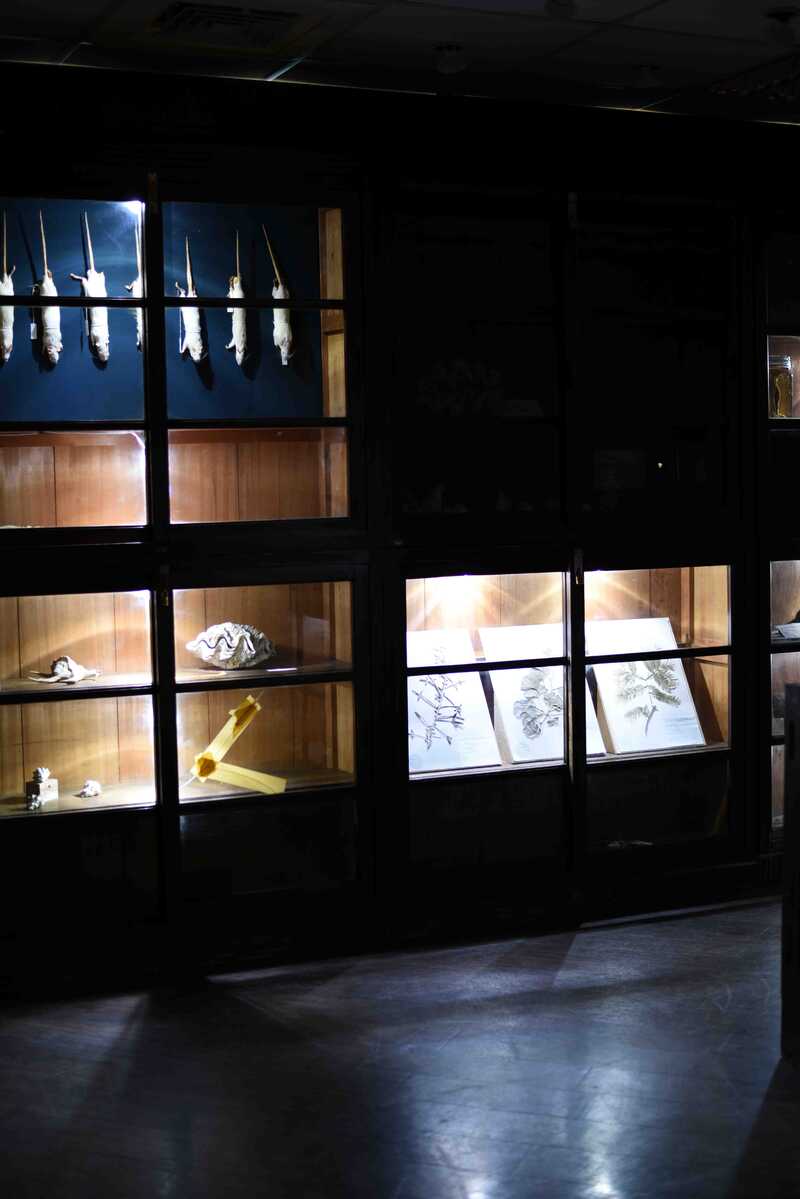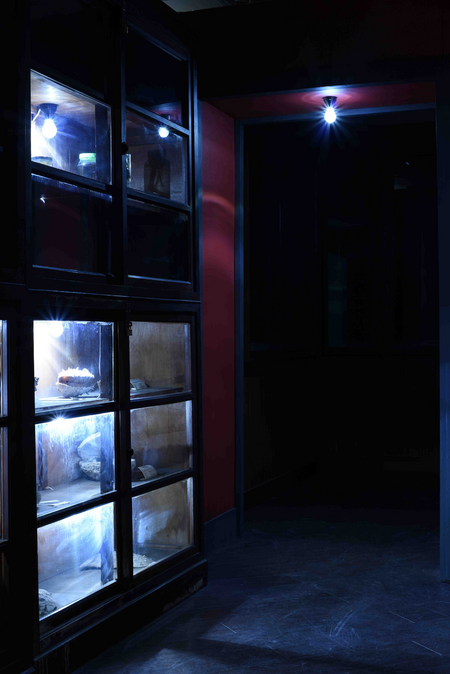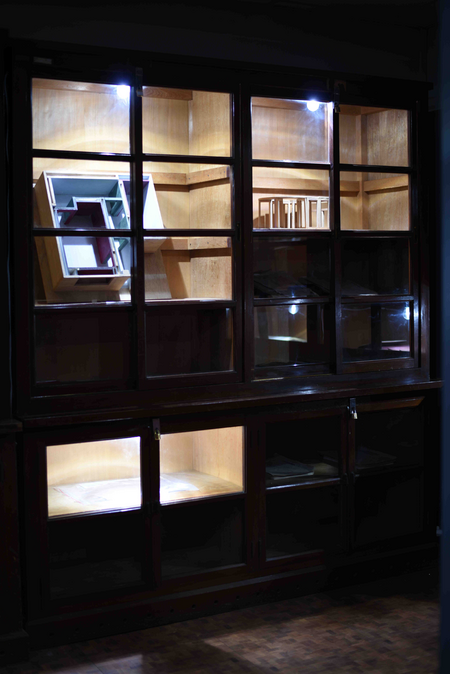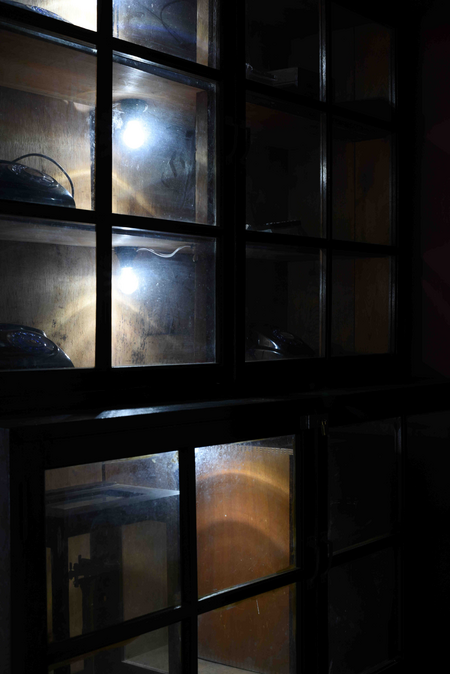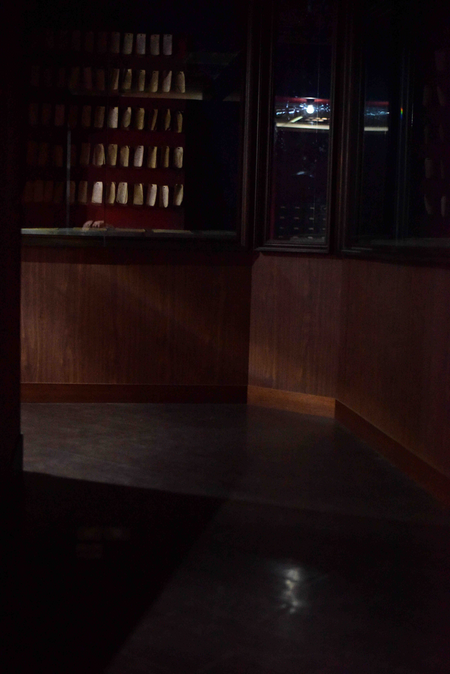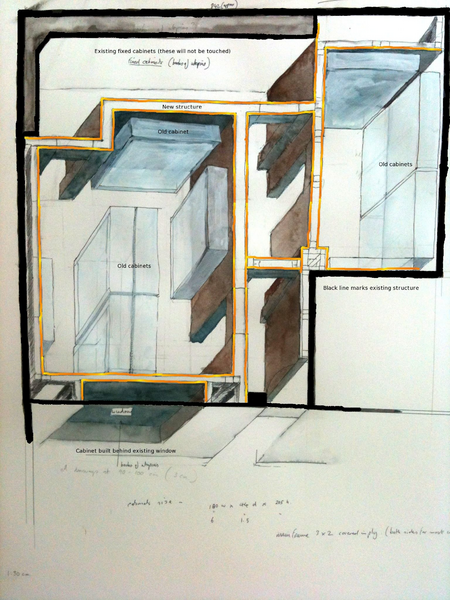A site-specific work in National Taiwan University that used the discarded objects from the University (ranging from technical equipment to cabinets from the Japanese colonial era) to produce a 'museum'. The aim was to open up a dialogue over what survives as historically important trace and what is discarded, and to play with ideas of presentation that indicates the value of an object.
Extra details from the original proposal:
The collected object
The nature of a collection is predicated on pre-existing conditions that lay out the parameters of he collection. For this project there are a number of conditions that govern the collection.
Primary is the status of the objects to be collected as ‘singular’, that is that they provoke a reaction of questioning (the concept of curiosity is central here). This status of the objects as ‘singular’ is in opposition to the objects in a museum collection, as these are typical – that is that they are of an order that enables the object to stand for all the others of its class (hence museums are educational tools in that they contain things that are examples or reference a specific history). The objects to be collected can also be ‘quotidian’, everyday objects that in the context of their normal function excite little interest. Divorced from this context and placed in the context of the cabinet, such objects will obtain the status of the singular. In addition the objects will be provided with ‘labels’ that reinforce this ‘singularity’, allowing the production of multiple poetic narratives that spiral out from the object.
A second parameter that will govern the objects is the practical one of dimensions. There will be maximum dimensions for the objects (which will aid in the status of the objects as fragments), with the flexibility of the design of the cabinet (or of the cabinets that will contain the objects within the overall cabinet framework) enabling objects of different dimensions to be accommodated. Maximum size of objects will be approximately 100cm (height) by 75cm by 75cm.
A third parameter for the objects will be based on sourcing them from different disciplines (knowledge areas) in the University, so that the collection retains the concept of curiosity as central (in distinction to attempting an overview of one area of knowledge).
The objects will come from various sources, with one emphasis being on things that are disregarded or are now stored (due to technological changes; changes in how knowledge is discovered; changes in the means used to disseminate knowledge), another being on elevating the everyday to the status of the object of wonder.
The students will therefore play a crucial part in the making of the work, being collaborators whose input will be important. They will explore the University, negotiate with staff to explore normally locked storage areas, recognise in objects the poetic possibilities. They will map the University as a series of connections that result from these processes.
A central component of this part of the project will be the laying out of the ideas to the students, via a series of illustrated talks. The talks will focus on topics central to the overall project – the history of cabinets of curiosities, museums, and the connections of these forms to art practice and theory (with reference ranging from Surrealism to the Pitt Rivers Museum and the Museum of Jurassic Technology for example), various ways in which collections can be utilised in contemporary art, and the relationships between art and science.
The methods used to display the objects in the cabinets will reinforce the concepts of singularity, and will reference a variety of means and methods of presentation. This will range from the use of magnifying lenses to direct the focus onto one part of an object (and fragment the overall affect); the placing of disparate objects in the space of the same cabinet (playing on the accidental poetry of such encounters – ‘as beautiful as the chance encounter of an umbrella and a sewing machine on a dissecting table’ ); the use of lights within the cabinets to emphasise the reliquary references; the use of materials such as linen in the interior of the cabinets. The objects will therefore not be displayed in a ‘museum-like manner’, but in contexts that add other readings/narratives. This will also be take place in the individual cabinets, with multiples of objects producing narratives.
The total cabinet structure itself is also an artwork, and not solely a means of display. It will be designed and constructed as an artwork, with the enclosed central space producing an area of multiple lights and reflections on the windows of the multiple interior cabinets.
The “books of utopias” are an integral part of the project, for, if the objects in the cabinet produce a dream-like series of connections (in the best surrealist sense), then these utopias are the dreams of what might be.
All of the elements relate to the wider questing that lies at the heart of the ideal of the University (whether a specific university or in general). The project is therefore site-specific, in that it could take place in any other type of venue. Only a university produces such connections of different knowledge areas, and only this University will produce this network of connections (objects, utopias) from this very specific set of people.
The Chamber of Uncanny Objects
Factsheet
- Dimensions
- 250cm, 600cm, 800cm (Height, Width, Depth)
- Year
- 2015
- Material
- Others, Glass, Light, Mixed Media, Wood
- Style
- Installation
- Theme
- Society, Science, Nature
